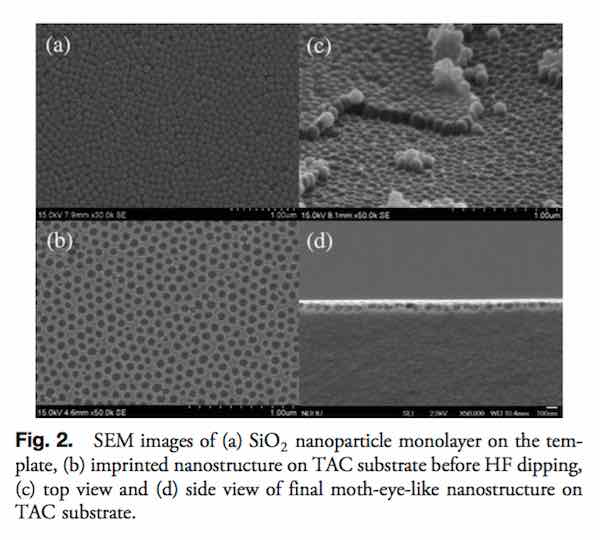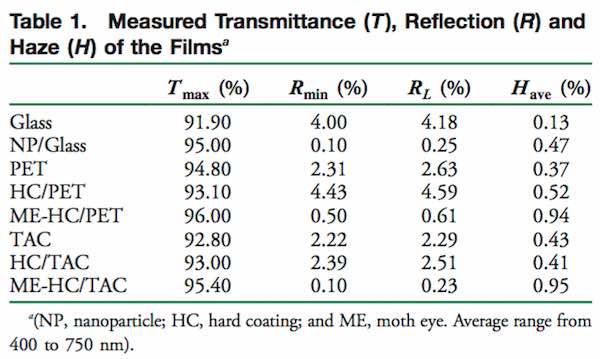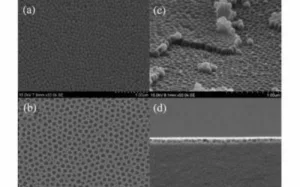An international collaboration between the University of Central Florida (CREOL), the National Taiwan University, and the National Dong Hwa University, Taiwan developed a flexible broadband AR film. The new AR film is based on a moth eye structure and produced via an imprinting method in an UV curable hard coating layer on a flexible substrate material. The resulting concave structure mimics a moth eye and creates an anti-reflection layer that shows excellent results as demonstrated by the prototypes. The measurements also show excellent correlation with a model developed by the researchers. This will ultimately allow optimization of such films on the computer rather than in the lab.

The process uses SiO2 nano spheres as the imprinting agent and a hard coating consisting of a mixture of liquid rubber, acrylate monomer, ethyl acetate, and a photo initiator to create the final structures. A fluorination process was added to enhance the self cleaning properties of the resulting film.
Prototypes created by this process showed very good results as is documented int he following table.

As we can see the Reflectance drops significantly compared to glass and the untreated substrate materials PET and TAC. On the other hand, the transmissivity increases. Unfortunately the haze also increases based on the introduction of very small structures below the wavelength of the light. As with other broadband AR coatings, a particular structure defined by size and indentation depth works best with a specific wavelength. As a result the reflected light shows a specific hue, depending on the wavelength of the light at the minimum reflectance.
The group also demonstrated that the resulting films show very little image quality degradation as shown in the image below.
 Motheye Broadband AR Film preserves image quality – left image no filter, middle moth eye film on PET, right mother eye film on TAC carrier.
Motheye Broadband AR Film preserves image quality – left image no filter, middle moth eye film on PET, right mother eye film on TAC carrier.
As the TAC carrier film is very flexible the resulting AR film is also flexible and would be a good solution for future flexible display systems. This new AR film will work with LCD as well as OLED displays and may help towards a solution for sunlight readable displays without depleting the battery by increasing the display brightness. (NH)

